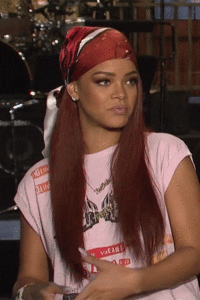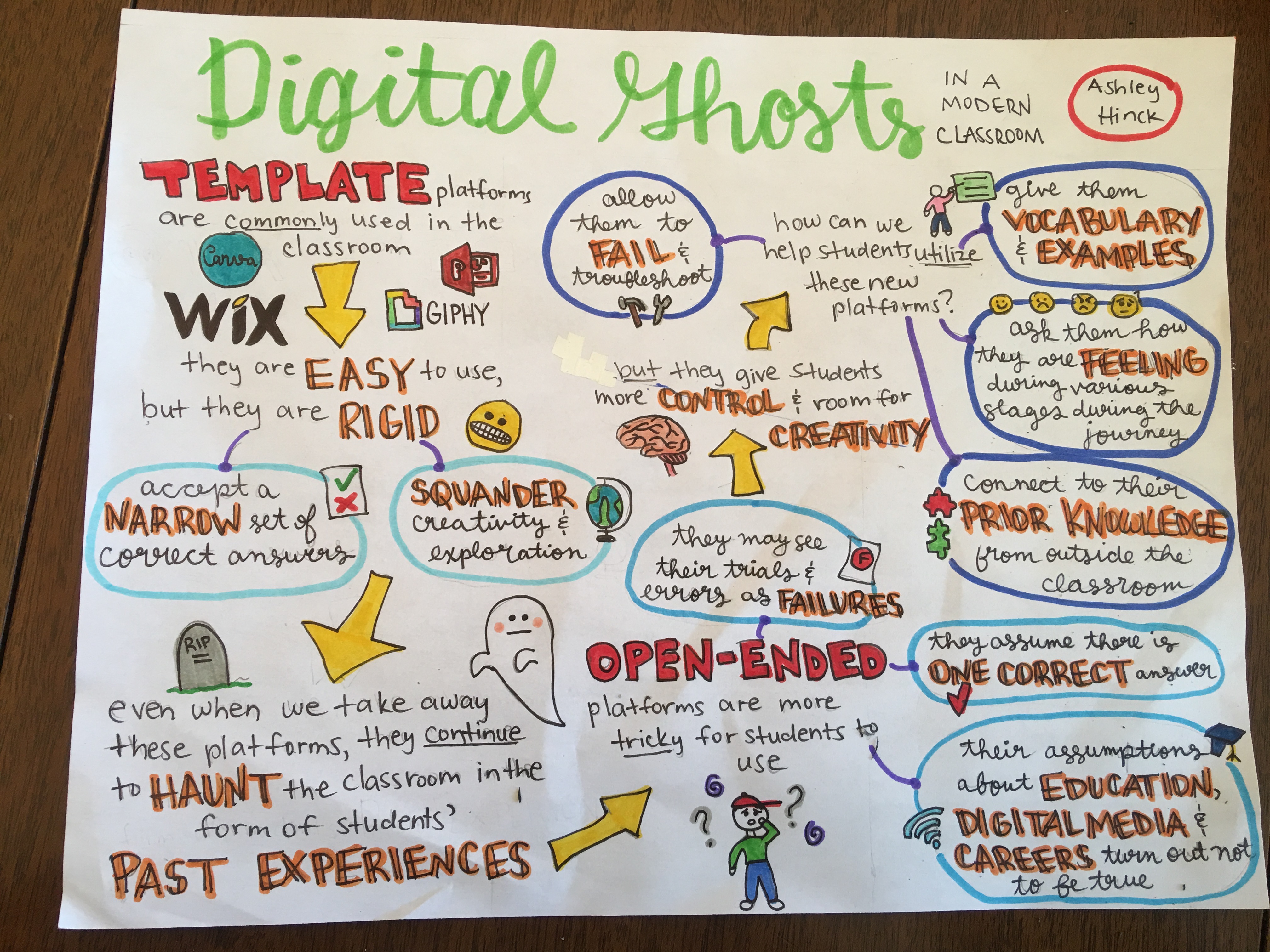I chose to analyze the podcast featuring Bruce Schneier, and the interview he gave about his new book titled, Click Here to Kill Everybody. I have to say that this podcast was rather intriguing and terrifying at the same time. Within minutes of listening to the podcast I found myself cringing at the fact that there are real risks in the new technological, networked and computer-based world. Schneier calls this new world “internet plus” and I truly believe we are now living in this almost unfortunate society. He explains throughout the podcast that it is nearly impossible to buy a product that is not connected to the internet in some way. Cars, appliances, televisions, medical supplies, etc. are all connected to the internet in some way or form and we are putting ourselves at a real risk for hacking. It is no longer about worrying that someone will steal p rivate information from the hospital and use it against you, now it’s about hacking the database and changing the blood type to kill you. He simply states the internet is coming, and it isn’t all it’s hyped up to be. A casino in vegas was hacked through an internet connected fish tank (and to me that sounds unheard of). Schneier explains that we can longer afford to make products in which systems and the government can spy on us, because the “bad guys” are using the same route to take things over. One day we will wake up with a hacked thermostat and be forced to pay in order to reclaim our houses. Schneier ends with the point that the government needs to put defense before offence. Companies need to ensure that systems are secure, rather than keep systems vulnerable for threats in order to attack against said threat. It’s out of our hands… companies need to change, and the government needs to change in order to secure safety.
rivate information from the hospital and use it against you, now it’s about hacking the database and changing the blood type to kill you. He simply states the internet is coming, and it isn’t all it’s hyped up to be. A casino in vegas was hacked through an internet connected fish tank (and to me that sounds unheard of). Schneier explains that we can longer afford to make products in which systems and the government can spy on us, because the “bad guys” are using the same route to take things over. One day we will wake up with a hacked thermostat and be forced to pay in order to reclaim our houses. Schneier ends with the point that the government needs to put defense before offence. Companies need to ensure that systems are secure, rather than keep systems vulnerable for threats in order to attack against said threat. It’s out of our hands… companies need to change, and the government needs to change in order to secure safety.
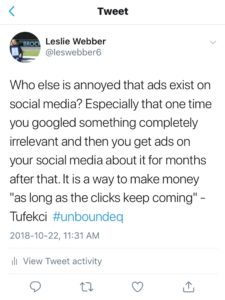 While I was listening to this podcast, the thought came to me that this directly relates to the twitter hashtag #unboundeq that we’ve recently had in this class. All of thetopics that Bruce Schneier was talking about was basically the class discussion we had on twitter. The internet is all around us and it’s scary how often someone is listening to us, especially when it comes to our personalized ads on Facebook.
While I was listening to this podcast, the thought came to me that this directly relates to the twitter hashtag #unboundeq that we’ve recently had in this class. All of thetopics that Bruce Schneier was talking about was basically the class discussion we had on twitter. The internet is all around us and it’s scary how often someone is listening to us, especially when it comes to our personalized ads on Facebook.
This might be naive or ignorant of me, but I don’t necessarily think about these bad things happening in my life, including breaches of privacy. I think that is why I find it so scary that these people have the knowledge and resources to hack into what I used to think were secure networks. Then there is my ideas about these actual products that hackers are taking control of… I never thought I would need a toaster or refrigerator that connected to the internet, but then once you have it you become lazy and rely on it, so every product after that needs to be connected. That is why when Schneier explained that authorities should be offering jail time for companies who do not take the time to secure these products made me stop and think about it for a minute. Do these companies want us to potentially get hacked? Or are they just more concerned with the look and consumerism to care about the vulnerability of the product? Either way, after listening to this podcast, it has definitely made me think about future purchases and getting the best secured network I can get.
Additionally, because I had so many thoughts that were running through my mind, I figured a mind map would be the best way to lay them out. What I took from the podcast was almost like “4 steps on how to reduce hacking”. I laid out my mind map in a way that audiences can see the connections between the topics, but ultimately end on the note that things need to change. After listening to this podcast, it is clear to me as a future educator that this topic cannot be taken lightly. We cannot risk the safety of ourselves, or our future students, so learning how to properly protect ourselves online is a step in the right direction.
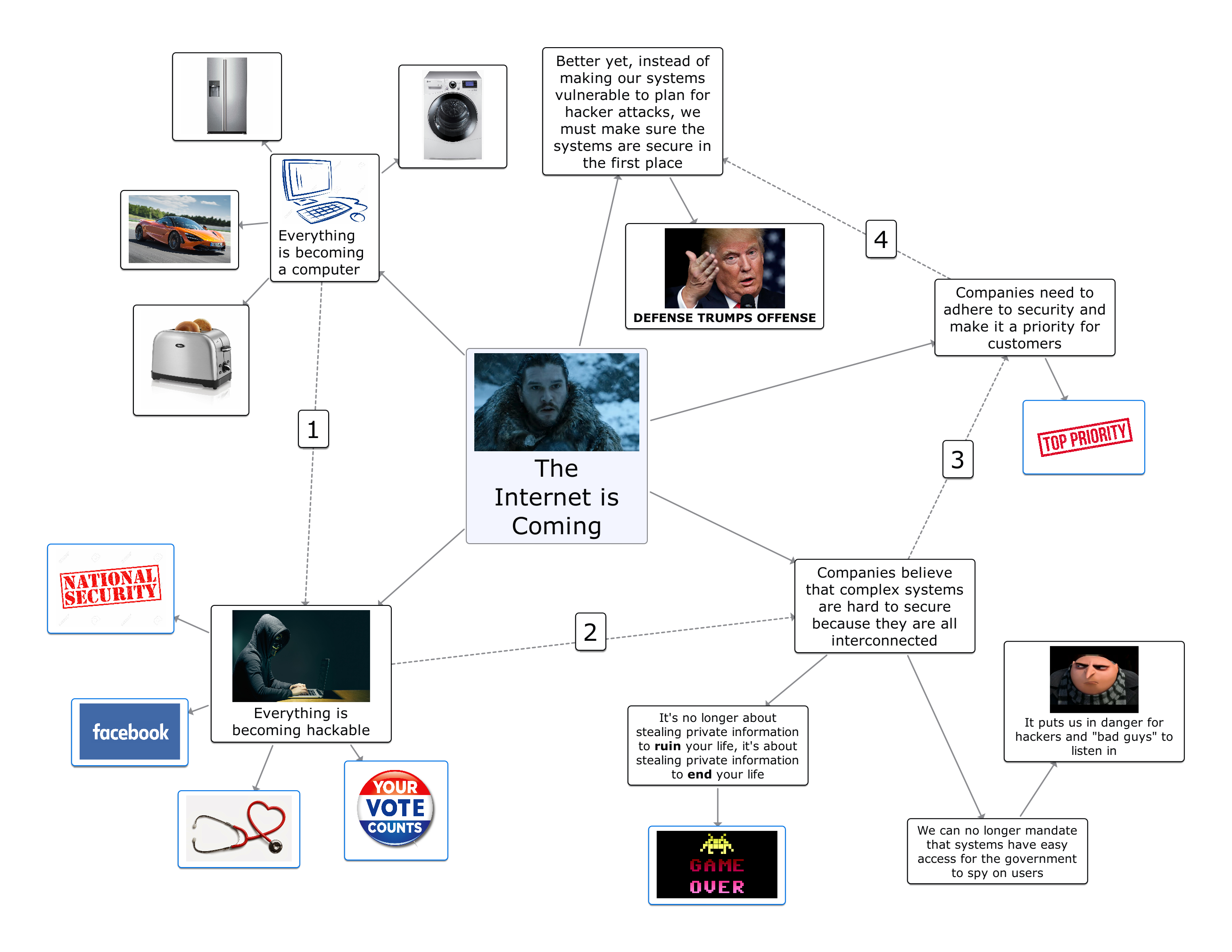
I have also attached a PDF copy of my artifact in case you need to zoom in on the words!
Leslie

 The internet used to just be about data, when our data was stolen and abused it was more of an unfortunate inconvenience but now the internet has access to things that can actually harm us and this presents a real risk to our well-being. Schneier explains the only way for companies to improve the security on their products is for the government to step in and force them to. Without an order from the government the only thing these companies are concerned with is making a profit off ill-informed consumers who are not even thinking about the security risks of purchasing a new refrigerator.
The internet used to just be about data, when our data was stolen and abused it was more of an unfortunate inconvenience but now the internet has access to things that can actually harm us and this presents a real risk to our well-being. Schneier explains the only way for companies to improve the security on their products is for the government to step in and force them to. Without an order from the government the only thing these companies are concerned with is making a profit off ill-informed consumers who are not even thinking about the security risks of purchasing a new refrigerator. educate students about the risks that come along with all the technology they are being exposed to. Does their home really need to be connected to their phones? With the thermostat, lights, TV and security system accessed through an app we are essentially inviting strangers into our homes because of convenience. Instead of remembering to turn off the lights we can just do it from the car on our morning commute. Educating students about what is available to them in terms of technology as well as the risks that go along with it will allow them to think critically about the risks they are opening themselves up to. Hopefully safety and security of citizens in the technical world will soon become the government’s first priority but until it is, as a future educator I will make sure to give my students the tools they need to protect themselves.
educate students about the risks that come along with all the technology they are being exposed to. Does their home really need to be connected to their phones? With the thermostat, lights, TV and security system accessed through an app we are essentially inviting strangers into our homes because of convenience. Instead of remembering to turn off the lights we can just do it from the car on our morning commute. Educating students about what is available to them in terms of technology as well as the risks that go along with it will allow them to think critically about the risks they are opening themselves up to. Hopefully safety and security of citizens in the technical world will soon become the government’s first priority but until it is, as a future educator I will make sure to give my students the tools they need to protect themselves.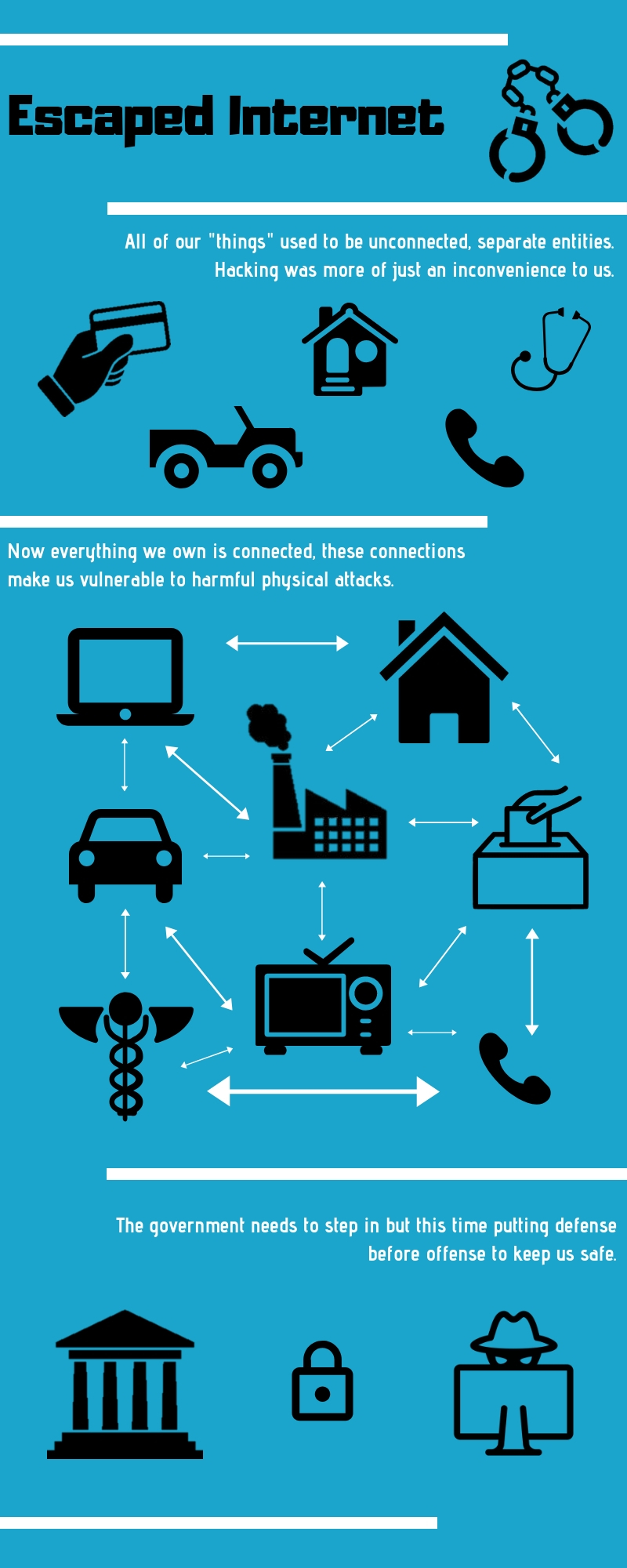
 read “
read “ vior-tracking app that awards students points or subtract them based on their conduct. Many teachers say the app helps them automate the task of recording classroom conduct, as well as allowing them to communicate directly with parents. There’s a big divide when it comes to this app. Some like being able to use the app to follow their child’s progress and receive reports from teachers. Others are asking the teacher to remove his/her child from ClassDojo because they are unsure how the information is being stored/used and feel that it can create labels that are unwanted. Co-founder Mr. Chaudhary says he and his team have studied ClassDojo’s effectiveness by visiting classrooms and conversing with many teachers that have used it.
vior-tracking app that awards students points or subtract them based on their conduct. Many teachers say the app helps them automate the task of recording classroom conduct, as well as allowing them to communicate directly with parents. There’s a big divide when it comes to this app. Some like being able to use the app to follow their child’s progress and receive reports from teachers. Others are asking the teacher to remove his/her child from ClassDojo because they are unsure how the information is being stored/used and feel that it can create labels that are unwanted. Co-founder Mr. Chaudhary says he and his team have studied ClassDojo’s effectiveness by visiting classrooms and conversing with many teachers that have used it. ys the case though. If technology isn’t used properly and well thought out, it shouldn’t be used. Before I engaged with the text, I thought it was a great idea that technology was being used in order to communicate with parents on their child”s behavior. Parents always want to be involved in their child’s life, even at school and it is important as teachers to make sure they are aware! In some cases we may actually be with their child more than they are so it is important to work together for the better of the student. The part of the text that gave me new ideas is the privacy aspect and how Classdojo is storing it and using it. I never even thought of that part before I begun reading and it is so important. When I am a parent, I want to know that my child’s information is safe and not out there for anyone to be able to see. I also don’t want him/her open to any bullying that could come from the whole class seeing. The classroom should be a safe environment for everyone and that is so so important. As an educator I am going to focus on creating a safe environment for MY students, in the classroom and online.
ys the case though. If technology isn’t used properly and well thought out, it shouldn’t be used. Before I engaged with the text, I thought it was a great idea that technology was being used in order to communicate with parents on their child”s behavior. Parents always want to be involved in their child’s life, even at school and it is important as teachers to make sure they are aware! In some cases we may actually be with their child more than they are so it is important to work together for the better of the student. The part of the text that gave me new ideas is the privacy aspect and how Classdojo is storing it and using it. I never even thought of that part before I begun reading and it is so important. When I am a parent, I want to know that my child’s information is safe and not out there for anyone to be able to see. I also don’t want him/her open to any bullying that could come from the whole class seeing. The classroom should be a safe environment for everyone and that is so so important. As an educator I am going to focus on creating a safe environment for MY students, in the classroom and online.

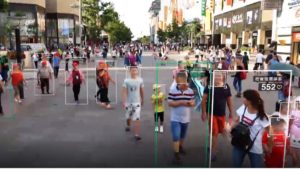 l engineering underway in China, which ultimately creates a Digital Totalitarian State. Social credits are essentially a score out of eight or nine hundred that each citizen has that influences their day-to-day activities. Those with higher scores will receive more education and job opportunities as well as VIP treatment in establishments including airports, restaurants, and financial institutions. The score is calculated through an array of 200 million CCTV cameras equipped with facial recognition and geo-thermal technology that cover every corner of the city. The score is influenced by every action made, item purchased, social interaction, and dollar held. All of these will determine whether one is given ample opportunities or shutout from society as a whole.
l engineering underway in China, which ultimately creates a Digital Totalitarian State. Social credits are essentially a score out of eight or nine hundred that each citizen has that influences their day-to-day activities. Those with higher scores will receive more education and job opportunities as well as VIP treatment in establishments including airports, restaurants, and financial institutions. The score is calculated through an array of 200 million CCTV cameras equipped with facial recognition and geo-thermal technology that cover every corner of the city. The score is influenced by every action made, item purchased, social interaction, and dollar held. All of these will determine whether one is given ample opportunities or shutout from society as a whole.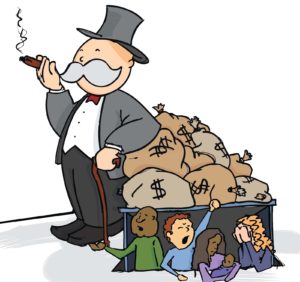 dents will embrace the abundance of opportunities and responsibilities they might earn that they would not have received otherwise. Second is that this technology could be another means to marginalize students that do not perform at grade level. Instead of receiving more assistance, they may be pushed to the side for the other high achieving students. A clear “rich get richer” type of mentality where the students working at or above grade level receive all of the praise and opportunity where as those below grade level sink that much further.
dents will embrace the abundance of opportunities and responsibilities they might earn that they would not have received otherwise. Second is that this technology could be another means to marginalize students that do not perform at grade level. Instead of receiving more assistance, they may be pushed to the side for the other high achieving students. A clear “rich get richer” type of mentality where the students working at or above grade level receive all of the praise and opportunity where as those below grade level sink that much further.
